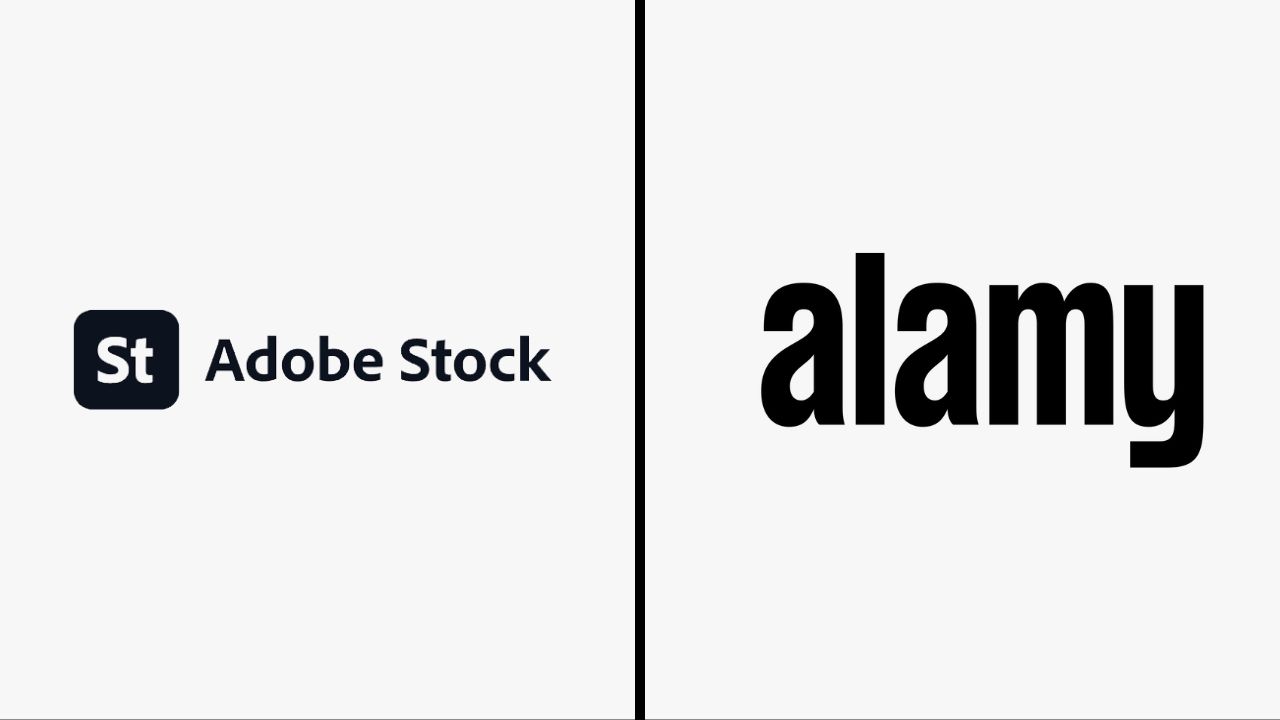Introduction
In today's digital age, the demand for high-quality visual content is soaring, opening up a world of opportunities for photographers to showcase and sell their work. Stock photography platforms have become the go-to destinations for both professional photographers and enthusiasts looking to monetize their images. Two prominent players in this landscape, Adobe Stock and Alamy, offer photographers a platform to reach a global audience, but choosing the right one can make all the difference.
In this blog post, we'll dive into a comprehensive comparison of Adobe Stock and Alamy, shedding light on the critical factors that photographers must consider when deciding which platform aligns best with their goals. Whether you're a seasoned pro seeking maximum exposure or a budding photographer looking to make your mark, understanding the unique features, licensing terms, revenue models, and user experiences of these platforms is crucial.
Also Read This: Mastering the American Accent with Dailymotion Tutorials
Audience and Goals
Understanding the audience and the goals of photographers is paramount when comparing stock image platforms like Adobe Stock and Alamy. Let's delve into who these platforms cater to and what photographers hope to achieve when using them:
Audience:
- Photographers: Both professional photographers and hobbyists form a significant portion of the audience. These individuals aim to showcase and sell their high-quality images to a wide range of customers, including designers, marketers, publishers, and businesses.
- Content Creators: Beyond photographers, content creators looking for stunning visuals to enhance their projects also make up a substantial portion of the audience. Bloggers, graphic designers, website developers, and social media managers often turn to stock image platforms for captivating imagery.
Goals:
- Monetization: Many photographers seek to monetize their work by selling images on stock platforms. The primary goal is to generate income from their photographic skills and to leverage the platforms' reach to reach a broader customer base.
- Exposure: Exposure and visibility are crucial for photographers looking to establish a reputation and expand their client base. A significant goal for photographers is to gain widespread recognition and increase the chances of their work being noticed by potential clients.
- Diverse Portfolio: For both photographers and content creators, building a diverse portfolio is essential. Aiming to offer a wide range of images that cater to different niches and preferences allows them to attract a broader audience.
- Simplicity and Efficiency: Ease of use, straightforward image submission processes, and streamlined management of their portfolios are essential goals. Photographers want platforms that make it easy to upload, track, and manage their images, allowing them to focus on their creative endeavors.
- Licensing Flexibility: Having the freedom to choose the right licensing terms for their images is crucial. Photographers may seek platforms that offer a range of licensing options, including royalty-free, rights-managed, and exclusive licenses, to meet their specific preferences and pricing strategies.
- Positive User Experience: A user-friendly interface, responsive customer support, and transparent reporting are aspects that photographers value. A positive experience on the platform makes it more likely for photographers to stay and continue uploading their work.
Understanding the aspirations and goals of photographers and content creators helps us evaluate how well Adobe Stock and Alamy align with their needs. By analyzing these factors, photographers can make a more informed decision when choosing the platform that best suits their goals, ultimately leading to a more fulfilling and successful experience in the world of stock photography.
[caption id="attachment_192011" align="alignnone" width="1500"] Audience and Goals[/caption]
Audience and Goals[/caption]
Also Read This: How to Straighten Dailymotion Videos for Perfect Video Alignment
Licensing and Revenue Models
Licensing and revenue models are pivotal factors in the stock photography industry, directly influencing how photographers earn from their work. Let's dive into the licensing terms and revenue models offered by Adobe Stock and Alamy, and how they impact photographers:
Adobe Stock:
- Royalty-Free License: Adobe Stock primarily operates on a royalty-free licensing model. This means that once a customer purchases a royalty-free image, they can use it multiple times across various projects without incurring additional fees. Photographers receive a predetermined percentage of the sale, which varies based on their contributor level and exclusivity.
- Extended Licenses: Adobe Stock offers extended licenses for specific use cases that go beyond the standard royalty-free license, such as using images on merchandise for resale. Extended licenses provide an additional revenue stream for photographers.
- Exclusivity and Higher Rates: Photographers have the option to become exclusive contributors to Adobe Stock, which can result in higher commission rates for their image sales. Exclusive contributors may also enjoy benefits like higher visibility in search results.
Alamy:
- Royalty Structure: Alamy offers a straightforward and generous royalty structure. Photographers receive a percentage of each sale based on the type of license used by the customer. The royalty rates may vary, but Alamy's approach aims to ensure photographers earn a fair share.
- Rights-Managed Licensing: Alamy offers both royalty-free and rights-managed licensing options. Rights-managed images provide photographers more control over how their images are used, allowing them to specify the exact terms of use for each image, which can lead to higher pricing for specific projects.
- Global Distribution: Alamy's global distribution network may lead to increased exposure for photographers, potentially resulting in higher sales and revenue.
Comparison:
- Licensing Flexibility: Adobe Stock offers the simplicity and convenience of a primarily royalty-free model, making it easier for customers to use images across various projects. Alamy's inclusion of rights-managed licensing allows photographers to have more control over their images and potentially negotiate higher prices for exclusive use.
- Exclusive Contributors: Adobe Stock's exclusivity option can provide higher commission rates for photographers who choose to contribute exclusively. This option might appeal to photographers seeking to maximize their earnings.
- Royalty Rates: Alamy's royalty structure is often praised for being fair to photographers, with a transparent percentage-based approach that ensures photographers receive a reasonable share of the sale.
Photographers must consider their image portfolio, licensing preferences, and exclusivity goals when evaluating these revenue models. While Adobe Stock's integration with Creative Cloud may appeal to certain photographers, those looking for more control over licensing terms or a simpler royalty structure might lean towards Alamy. The right choice depends on individual priorities and the types of images photographers wish to sell.
[caption id="attachment_192012" align="alignnone" width="1500"] Licensing and Revenue Models[/caption]
Licensing and Revenue Models[/caption]
Also Read This: Viewing project appreciation on Behance
Image Submission and Approval Process
The image submission and approval process is a crucial aspect of any stock image platform, affecting how quickly photographers can get their work in front of potential buyers. Let's examine the image submission and approval processes on both Adobe Stock and Alamy:
Adobe Stock:
- Submission Guidelines: Adobe Stock provides clear submission guidelines that outline technical requirements, image quality standards, and content restrictions. These guidelines help photographers ensure their submissions meet the platform's standards.
- Contributor Portal: Photographers need to create an Adobe Stock contributor account and access the contributor portal. Here, they can upload their images, add relevant metadata (such as titles, descriptions, and keywords), and select appropriate categories.
- Keywording and Categorization: Proper keywording and accurate categorization are essential for image discoverability. Adobe Stock's contributor portal often provides keyword suggestions to improve search optimization.
- Image Review: Once images are uploaded, Adobe Stock's review team evaluates them for technical quality, relevance, and compliance with content guidelines. This review process ensures that only high-quality and suitable images are accepted.
- Approval Notification: Photographers receive notifications regarding the status of their submissions, whether they are approved or require adjustments. If images need modifications, contributors can make the necessary changes and resubmit.
Alamy:
- Contributor Account: Photographers need to create a contributor account on the Alamy platform. This account serves as the starting point for the submission process.
- Image Upload: Photographers can upload their images to the Alamy platform through the contributor account. During the upload, they provide image details, keywords, and categorization to optimize searchability.
- Image Review: Alamy's review process ensures that images meet technical and quality standards. The review team evaluates image clarity, focus, composition, and overall suitability for the platform.
- Approval and QC: Alamy's Quality Control (QC) process ensures images adhere to their guidelines. Images that pass QC are made available for sale in the Alamy marketplace.
- Notification: Photographers receive notifications about the status of their submissions, similar to Adobe Stock. They are informed if their images are approved or if any issues need to be addressed.
Comparison:
- Submission Ease: Both platforms have user-friendly contributor portals, making it relatively straightforward to upload and manage images.
- Keywording Assistance: Adobe Stock often provides keyword suggestions, which can be beneficial for photographers to enhance image visibility. Alamy may also offer keywording tips, but these can vary.
- Image Review Process: Both platforms have a thorough review process to ensure high-quality and suitable content.
- Feedback and Adjustments: Both platforms allow photographers to receive feedback and make necessary adjustments to improve their submissions.
Photographers should consider their preferences, whether they value specific features such as keyword assistance or if they have a preference for one platform's submission process. Ultimately, a smooth submission and approval process can significantly impact a photographer's experience and the speed at which their images are made available to potential buyers.
[caption id="attachment_192013" align="alignnone" width="2560"] Image Submission and Approval Process[/caption]
Image Submission and Approval Process[/caption]
Also Read This: Activating Gifts on YouTube â What You Need to Know
Image Pricing and Market Reach
Image pricing and market reach are critical considerations for photographers looking to sell their work on stock image platforms like Adobe Stock and Alamy. Let's explore how these platforms approach pricing and the potential market reach they offer to photographers:
Adobe Stock:
- Pricing Tiers: Adobe Stock offers a tiered pricing structure based on image resolution. Different image sizes come with different price points, allowing customers to choose the size that fits their needs while providing photographers with varied revenue opportunities.
- Subscription Plans: Adobe Stock is known for its subscription plans, where customers pay a monthly fee for a certain number of image downloads. Photographers earn based on the number of times their images are downloaded by subscribers.
- Single Image Purchases: In addition to subscription plans, Adobe Stock also offers single image purchases. Customers can buy individual images, and photographers earn a commission based on the sale.
- Market Reach: Adobe Stock has a vast user base, thanks to its integration with Adobe Creative Cloud. This integration exposes photographers' work to a broad range of creative professionals who use Adobe's software, making it a significant advantage for market reach.
Alamy:
- Simplified Pricing: Alamy follows a straightforward pricing model, where images are typically sold at a set price, regardless of size or resolution. This model simplifies the pricing structure for customers.
- High Average Sale Price: Alamy is often praised for its higher average sale price per image. Photographers may earn more per sale on Alamy due to this pricing approach.
- Market Reach: Alamy boasts a vast and diverse customer base, including editorial clients, publishers, marketers, and more. Their wide-reaching customer network ensures photographers' images have the potential to be used across a variety of industries.
Comparison:
- Pricing Flexibility: Adobe Stock's pricing tiers cater to various customer needs, while Alamy's consistent pricing structure may simplify the buying process for customers.
- Subscription Impact: Adobe Stock's subscription plans can lead to more frequent image downloads, which can be beneficial for photographers who prioritize consistent income. Alamy's focus on single image sales may result in higher individual sale prices.
- Creative Cloud Integration: Adobe Stock's integration with Adobe Creative Cloud significantly enhances market reach, especially for photographers who create content that aligns with Adobe software users' needs.
- Diverse Clientele: Alamy's diverse customer base may lead to images being used in a wide range of projects and industries, potentially increasing the exposure and versatility of photographers' work.
Photographers should consider their pricing preferences, the type of customer base they wish to target, and the potential impact of Adobe Creative Cloud integration when deciding between Adobe Stock and Alamy. The right choice will depend on individual pricing goals, image portfolio characteristics, and target audience preferences.
[caption id="attachment_192015" align="alignnone" width="1500"] Image Pricing and Market Reach[/caption]
Image Pricing and Market Reach[/caption]
Also Read This: Earnings for Shutterstock Image Reviewers
Platform Interface and User Experience
Image pricing and market reach are critical considerations for photographers looking to sell their work on stock image platforms like Adobe Stock and Alamy. Let's explore how these platforms approach pricing and the potential market reach they offer to photographers:
Adobe Stock:
- Pricing Tiers: Adobe Stock offers a tiered pricing structure based on image resolution. Different image sizes come with different price points, allowing customers to choose the size that fits their needs while providing photographers with varied revenue opportunities.
- Subscription Plans: Adobe Stock is known for its subscription plans, where customers pay a monthly fee for a certain number of image downloads. Photographers earn based on the number of times their images are downloaded by subscribers.
- Single Image Purchases: In addition to subscription plans, Adobe Stock also offers single image purchases. Customers can buy individual images, and photographers earn a commission based on the sale.
- Market Reach: Adobe Stock has a vast user base, thanks to its integration with Adobe Creative Cloud. This integration exposes photographers' work to a broad range of creative professionals who use Adobe's software, making it a significant advantage for market reach.
Alamy:
- Simplified Pricing: Alamy follows a straightforward pricing model, where images are typically sold at a set price, regardless of size or resolution. This model simplifies the pricing structure for customers.
- High Average Sale Price: Alamy is often praised for its higher average sale price per image. Photographers may earn more per sale on Alamy due to this pricing approach.
- Market Reach: Alamy boasts a vast and diverse customer base, including editorial clients, publishers, marketers, and more. Their wide-reaching customer network ensures photographers' images have the potential to be used across a variety of industries.
Comparison:
- Pricing Flexibility: Adobe Stock's pricing tiers cater to various customer needs, while Alamy's consistent pricing structure may simplify the buying process for customers.
- Subscription Impact: Adobe Stock's subscription plans can lead to more frequent image downloads, which can be beneficial for photographers who prioritize consistent income. Alamy's focus on single image sales may result in higher individual sale prices.
- Creative Cloud Integration: Adobe Stock's integration with Adobe Creative Cloud significantly enhances market reach, especially for photographers who create content that aligns with Adobe software users' needs.
- Diverse Clientele: Alamy's diverse customer base may lead to images being used in a wide range of projects and industries, potentially increasing the exposure and versatility of photographers' work.
Photographers should consider their pricing preferences, the type of customer base they wish to target, and the potential impact of Adobe Creative Cloud integration when deciding between Adobe Stock and Alamy. The right choice will depend on individual pricing goals, image portfolio characteristics, and target audience preferences.
[caption id="attachment_192014" align="alignnone" width="1280"] Platform Interface and User Experience[/caption]
Platform Interface and User Experience[/caption]
Also Read This: Vanishing Act: Deleting Your Shopify Store
Marketing and Promotion
Marketing and promotion strategies employed by stock image platforms can significantly impact the visibility and potential sales of photographers' work. Let's compare how Adobe Stock and Alamy handle marketing and promotion for the images on their platforms:
Adobe Stock:
- Integration with Creative Cloud: One of the standout marketing aspects for Adobe Stock is its seamless integration with Adobe Creative Cloud. This integration exposes photographers' images to a massive user base of creative professionals who use Adobe's software for design, illustration, and more. This direct integration offers a distinct advantage in reaching a target audience already engaged in creative projects.
- Featured Collections: Adobe Stock occasionally features curated collections, showcasing outstanding imagery based on themes, events, or trends. Having your images selected for these collections can significantly enhance their visibility and attract more potential buyers.
- Promotional Opportunities: Adobe Stock may run promotional campaigns, special offers, or discounts that attract more customers to the platform. These promotions can lead to increased image sales during such periods.
- Marketing Support: Adobe Stock's marketing efforts and collaborations with Adobe's other services can contribute to a broader reach for photographers' work. Adobe often promotes Creative Cloud services, and Adobe Stock is a part of that ecosystem.
Alamy:
- Global Distribution: Alamy's strength lies in its extensive distribution network. Images on Alamy have the potential to be used by a diverse range of clients worldwide, including editorial clients, publishers, marketers, and more.
- Editorial Reach: Alamy's focus on editorial content allows photographers to tap into the demand for newsworthy images. Having images used in editorial contexts can lead to higher exposure and recognition.
- Optimized for Search Engines: Alamy invests in search engine optimization (SEO) for its platform, which can increase the visibility of images on search engines, potentially driving organic traffic to photographers' portfolios.
- Alamy Blog and Resources: Alamy provides a blog with informative articles, industry insights, and photography tips, which can help photographers improve their craft and stay updated on trends. This knowledge-sharing initiative contributes to a supportive community.
Comparison:
- Integration vs. Global Reach: Adobe Stock's integration with Creative Cloud is a powerful marketing tool, especially for Adobe software users. Alamy's wide-reaching distribution network offers exposure to a diverse global clientele, attracting buyers from various industries.
- Featured Collections vs. Editorial Focus: Adobe Stock's featured collections can boost visibility, while Alamy's editorial focus opens doors to newsworthy opportunities.
- Promotions vs. SEO: Adobe Stock's occasional promotions may attract more buyers during those periods, while Alamy's SEO efforts can generate organic traffic over time.
Photographers should consider the marketing strategies of both platforms, their target audience, and the types of images they offer. Choosing the platform that aligns with their promotional goals and exposure preferences can help photographers maximize the visibility and sales potential of their work.
[caption id="attachment_192016" align="alignnone" width="1500"] Marketing and Promotion[/caption]
Marketing and Promotion[/caption]
User Reviews and Feedback
User reviews and feedback are invaluable resources for gaining insights into the real-world experiences of photographers and contributors on stock image platforms like Adobe Stock and Alamy. Let's delve into the reviews and feedback these platforms have received, shedding light on what photographers have to say about their experiences:
Adobe Stock:
- Positive Aspects: Many photographers appreciate Adobe Stock's seamless integration with Adobe Creative Cloud applications. Users find it convenient to access and use stock images directly within familiar software, streamlining their creative process. The vast user base of Adobe software users provides a substantial potential audience for contributors' work.
- Content Quality: Adobe Stock is praised for its high-quality image library, encompassing a wide range of subjects and styles. Contributors find that their images are often presented in a professional manner, which is crucial for attracting buyers.
- Submission Process: Some photographers mention that the image submission process on Adobe Stock is straightforward, with clear guidelines and a user-friendly contributor portal. The keyword suggestion feature is particularly appreciated for optimizing image searchability.
- Licensing and Earnings: Contributors highlight the flexibility of licensing options, including royalty-free and extended licenses. However, there may be occasional concerns about low earnings per sale, especially for non-exclusive contributors.
- Customer Support: While experiences vary, some users mention positive interactions with Adobe Stock's customer support, reporting timely responses and assistance with queries.
Alamy:
- Wide Market Reach: Many photographers appreciate Alamy's global distribution network, which allows their images to reach a diverse clientele, including editorial clients, publishers, marketers, and businesses from around the world. The potential for exposure across various industries is a significant advantage.
- Higher Payouts: Some contributors highlight Alamy's higher average sale price per image, leading to potentially more substantial individual earnings per sale compared to other stock platforms.
- Submission Process: Users often find Alamy's image submission process relatively straightforward, with an intuitive contributor portal. There is also praise for Alamy's consistent review standards, ensuring that images meet quality and technical criteria.
- Licensing Flexibility: Photographers value the option to choose between royalty-free and rights-managed licensing, giving them more control over how their images are used and potentially leading to higher pricing for specific projects.
- Customer Support: Alamy is generally perceived to offer responsive customer support, with users noting assistance with image approvals, technical issues, and licensing inquiries.
Comparison:
- Integration vs. Global Reach: Contributors to Adobe Stock appreciate the seamless integration with Adobe software, while Alamy's global distribution network is praised for reaching diverse industries.
- Image Quality and Pricing: Adobe Stock's image quality and pricing may align well with designers and creative professionals, while Alamy's focus on higher average sale prices could attract photographers seeking more significant individual earnings per sale.
- Submission Process and Support: Both platforms generally receive positive feedback regarding their submission process and customer support, which is crucial for a smooth contributor experience.
Photographers should consider the specific aspects that align with their goals and preferences when evaluating user reviews and feedback. Each platform has its strengths, and understanding the experiences of other contributors can help make an informed decision that best suits the photographer's needs and objectives.
[caption id="attachment_192017" align="alignnone" width="1500"] User Reviews and Feedback[/caption]
User Reviews and Feedback[/caption]
Conclusion
In conclusion, the choice between Adobe Stock and Alamy depends on individual priorities and circumstances. Adobe Stock's integration with Creative Cloud and extensive user base suits Adobe software users seeking seamless image integration, while Alamy's global distribution offers exposure to diverse industries. Photographers valuing higher average sale prices may find Alamy appealing, whereas those prioritizing convenience and potential for consistent earnings might lean towards Adobe Stock. It's crucial to consider licensing flexibility, image pricing, market reach, and platform user experience when deciding, ensuring the chosen platform aligns with one's unique goals, image portfolio, and target audience.
